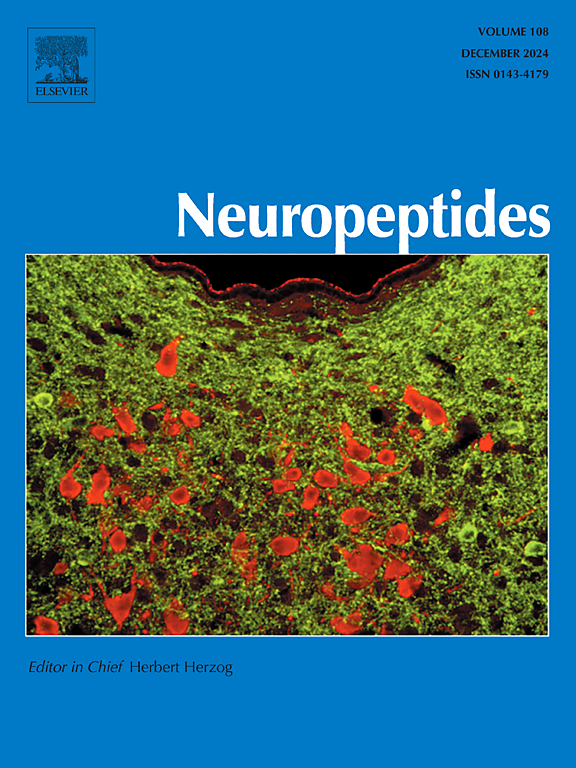Factors affecting the physical stability of peptide self-assembly in neurodegenerative disorders
IF 2.7
3区 医学
Q3 ENDOCRINOLOGY & METABOLISM
引用次数: 0
Abstract
Biological systems comprise of diverse biomolecules, including proteins, nucleic acids, lipids, and carbohydrates. Peptides, which are short chains of amino acids, exhibit unique properties when assembled to nano-level architectures. Self-assembling peptides possess a remarkable ability to organize into structured aggregates such as nanofibers, nanotubes, nanoribbons, and nanovesicles. These intricate structures are linked to neurodegenerative diseases, including Alzheimer's disease, Parkinson's disease, Prion disease, Huntington's disease, and type II diabetes. Peptide nano assembly can be guided by external stimuli, such as temperature, pH, ultrasound, electric and magnetic fields. In this review, the discussion will be centred around the various factors that influence the self-assembly of peptides alongside therapeutic interventions that align with the fundamental principles of thermodynamics and kinetics to modulate the aggregation characteristics of peptide self-assembly.

影响神经退行性疾病中多肽自组装物理稳定性的因素。
生物系统由多种生物分子组成,包括蛋白质、核酸、脂质和碳水化合物。肽是一种短链氨基酸,在组装成纳米级结构时表现出独特的性质。自组装肽具有组织成结构聚集体的显著能力,如纳米纤维、纳米管、纳米带和纳米囊泡。这些复杂的结构与神经退行性疾病有关,包括阿尔茨海默病、帕金森氏病、朊病毒病、亨廷顿氏病和II型糖尿病。肽纳米组装可以受到外界刺激的引导,如温度、pH、超声、电场和磁场。在这篇综述中,讨论将集中在影响多肽自组装的各种因素,以及与热力学和动力学基本原理相一致的治疗干预措施,以调节多肽自组装的聚集特征。
本文章由计算机程序翻译,如有差异,请以英文原文为准。
求助全文
约1分钟内获得全文
求助全文
来源期刊

Neuropeptides
医学-内分泌学与代谢
CiteScore
5.40
自引率
6.90%
发文量
55
审稿时长
>12 weeks
期刊介绍:
The aim of Neuropeptides is the rapid publication of original research and review articles, dealing with the structure, distribution, actions and functions of peptides in the central and peripheral nervous systems. The explosion of research activity in this field has led to the identification of numerous naturally occurring endogenous peptides which act as neurotransmitters, neuromodulators, or trophic factors, to mediate nervous system functions. Increasing numbers of non-peptide ligands of neuropeptide receptors have been developed, which act as agonists or antagonists in peptidergic systems.
The journal provides a unique opportunity of integrating the many disciplines involved in all neuropeptide research. The journal publishes articles on all aspects of the neuropeptide field, with particular emphasis on gene regulation of peptide expression, peptide receptor subtypes, transgenic and knockout mice with mutations in genes for neuropeptides and peptide receptors, neuroanatomy, physiology, behaviour, neurotrophic factors, preclinical drug evaluation, clinical studies, and clinical trials.
 求助内容:
求助内容: 应助结果提醒方式:
应助结果提醒方式:


